Future of offshore wind turbine technology
Technological innovation
Technology innovation drove significant cost reductions in renewables, propelling wind power, particularly offshore wind, into the energy mainstream. Offshore wind turbine power ratings have increased remarkably, with average sizes surpassing 6 MW in 2020 and projected to exceed 12 MW by 2025. Innovation was spurred by the need to lower levelized cost of energy (LCOE) and enhance efficiency.
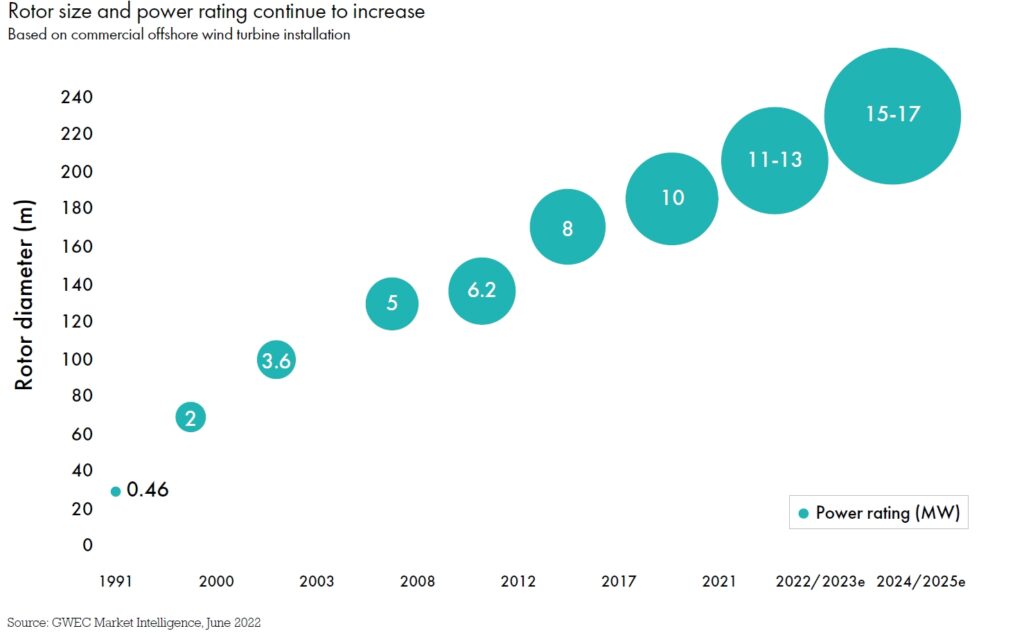
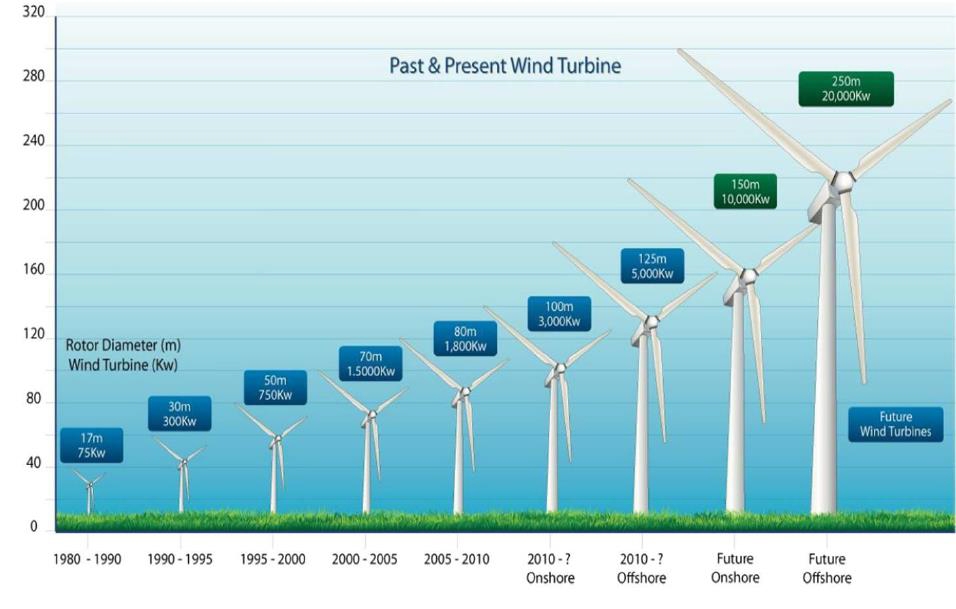
Bigger turbines with higher ratings and longer blades boost annual energy production. The SG 14-236 DD model by Siemens Gamesa, for instance, improves AEP by over 30% compared to its predecessor. This innovation has contributed to a global offshore LCOE decrease of over 65% in the past decade.
Current Technology Trend
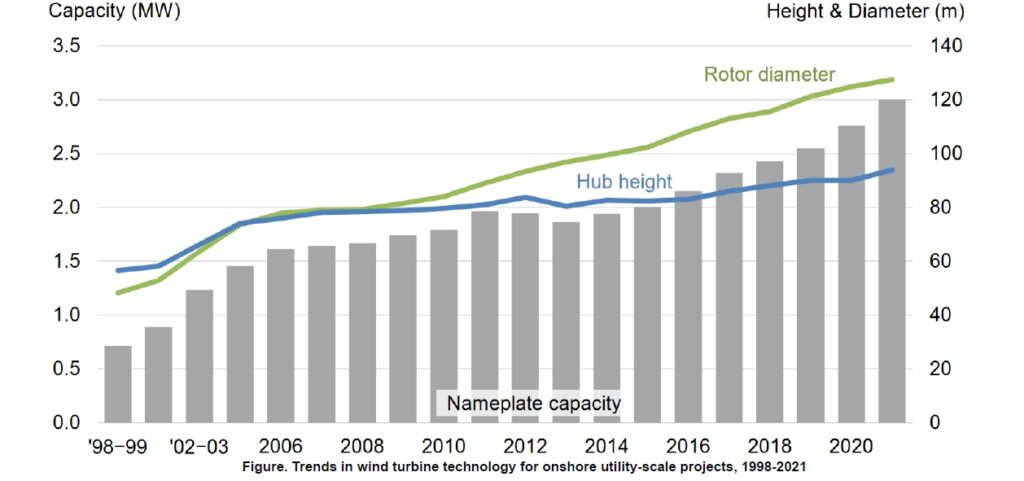
Evolution of wind turbine size and power output
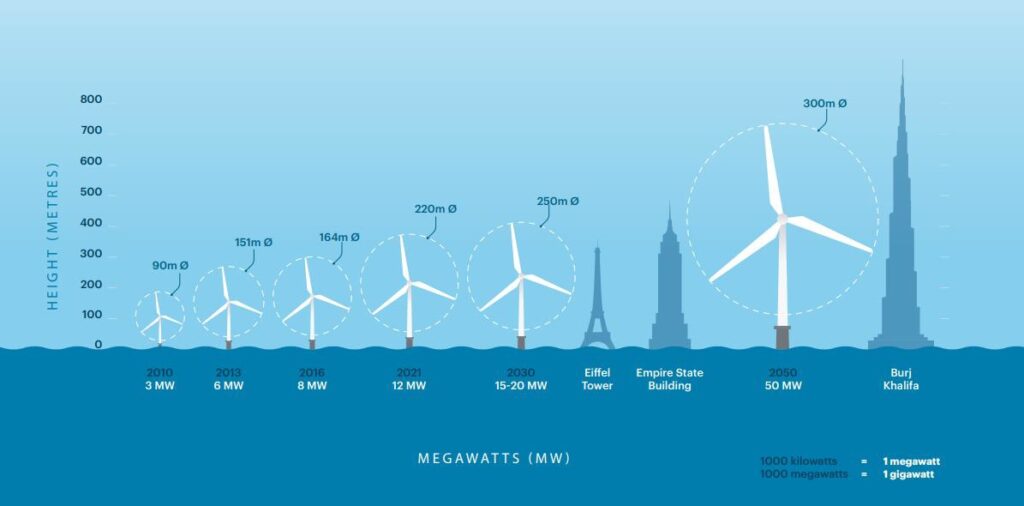
Floating Vs Fixed Foundation
Foundation Types
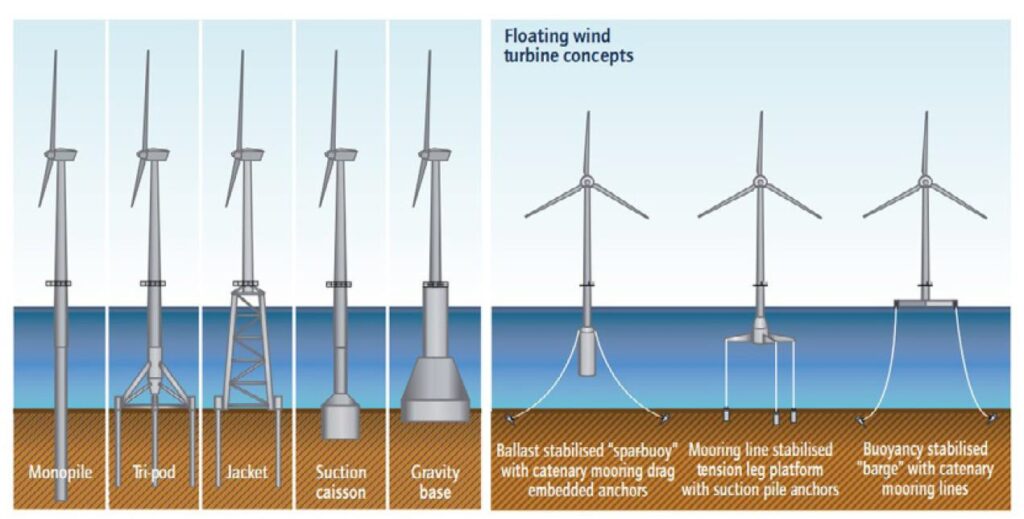
Source: Wiser et al., 2011/
There are two main offshore wind technologies: fixed foundation, directly anchored to the seabed, and floating turbines, secured by underwater cables. While existing wind farms use fixed foundations for water depths up to 50-60 meters, commercialization of floating turbines, capable of greater depths, is growing and expected to increase in the coming years. Diagram ES4 illustrates both foundation types (GWEC, 2020). Image Credit: GWEC, 2020.
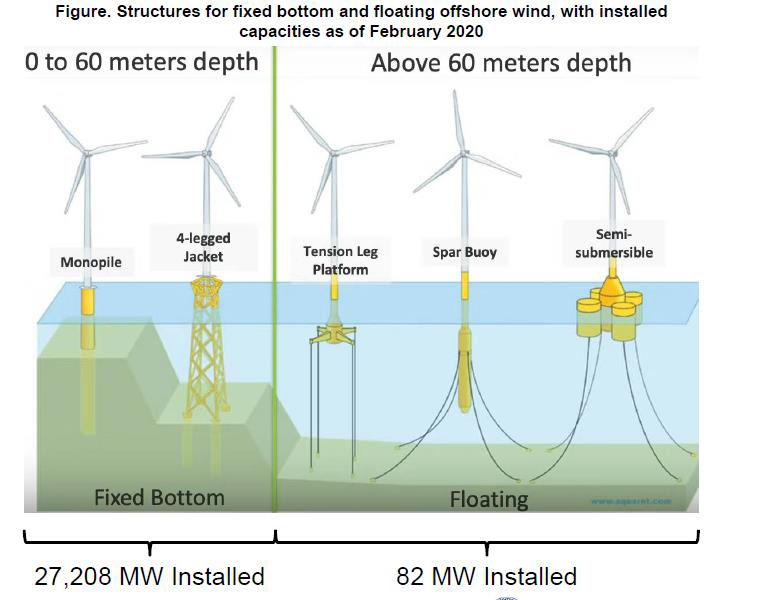
In regions where water depths exceed 60 meters, utilizing floating structures can offer improved cost-effectiveness, while approximately 80% of offshore wind resources are situated in these deeper waters. This technology enables the placement of facilities